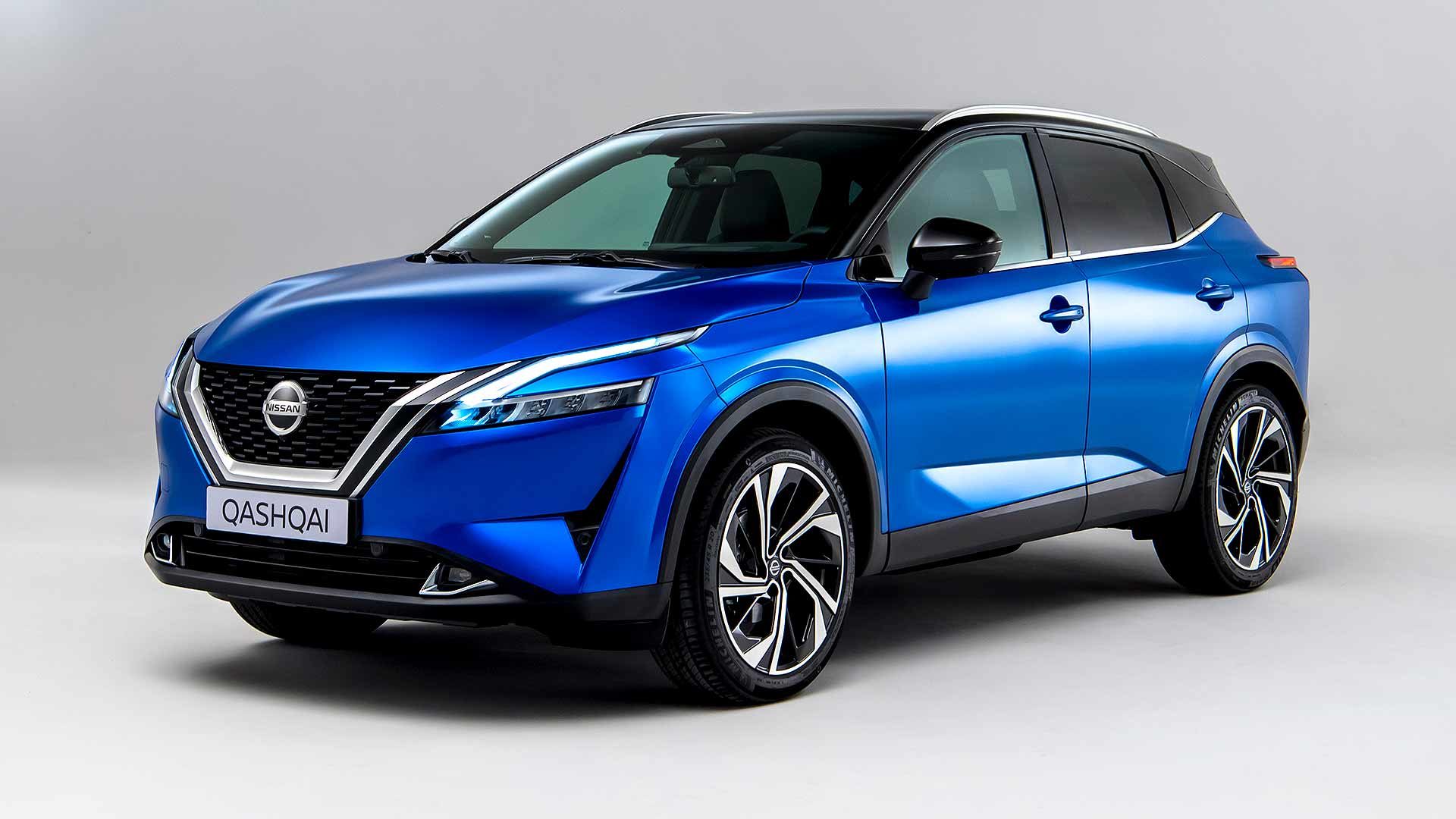
Since inventing the crossover SUV, Nissan has sold more than three million Qashqais. Now, 13 years after the original, the third-generation 2021 version aims to continue that success story.
Derived from a lightweight, all-new platform, the latest Qashqai has been designed and engineered in the UK – and will also be built here, at the firm’s giant Sunderland factory.
The new Qashqai is longer, wider and taller than the current model, and now wears alloy wheels up to 20 inches in size. There are 11 body colours, plus an additional five two-tone combinations.
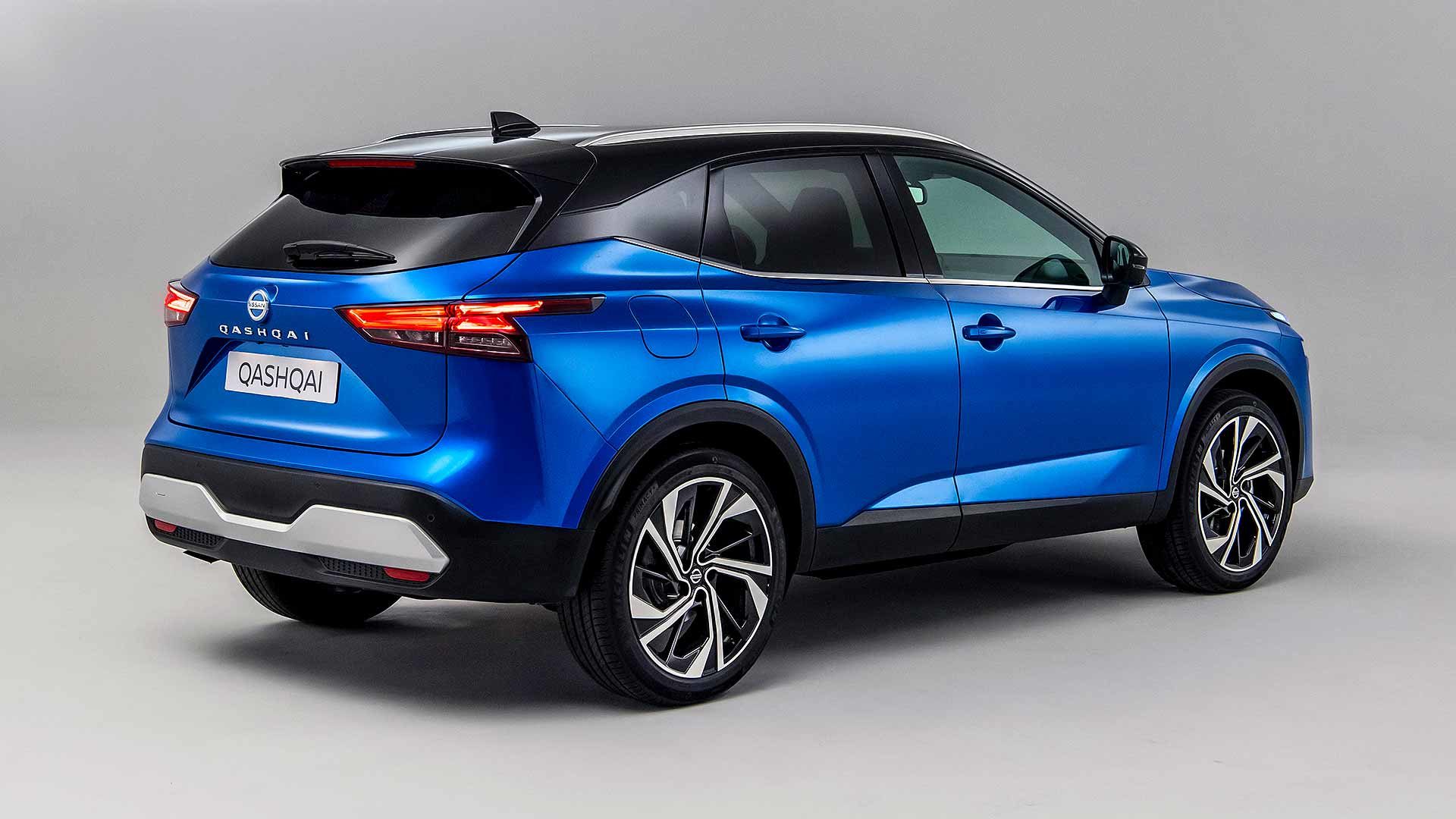
The interior has been transformed, while diesel engines have been canned in favour of a mild hybrid petrol, plus a new hybrid-style option called e-Power.
The decision to ditch diesel was deliberate, said product planning chief Marco Fioravanti: “We are convinced our new offer will be better for European customers”. He promised Motoring Research that customers “are going to love” the engines available.
“The new Qashqai is going to change what customers can expect from a family car,” said Nissan chairman Gianluca de Ficchy. “Comfort, refinement and technology will be comparable with upper segment vehicles, while the driving experience will satisfy drivers and passengers alike.”
Deliveries begin in summer 2021, with prices to be confirmed: the current Qashqai costs from £23,550.
New Qashqai design
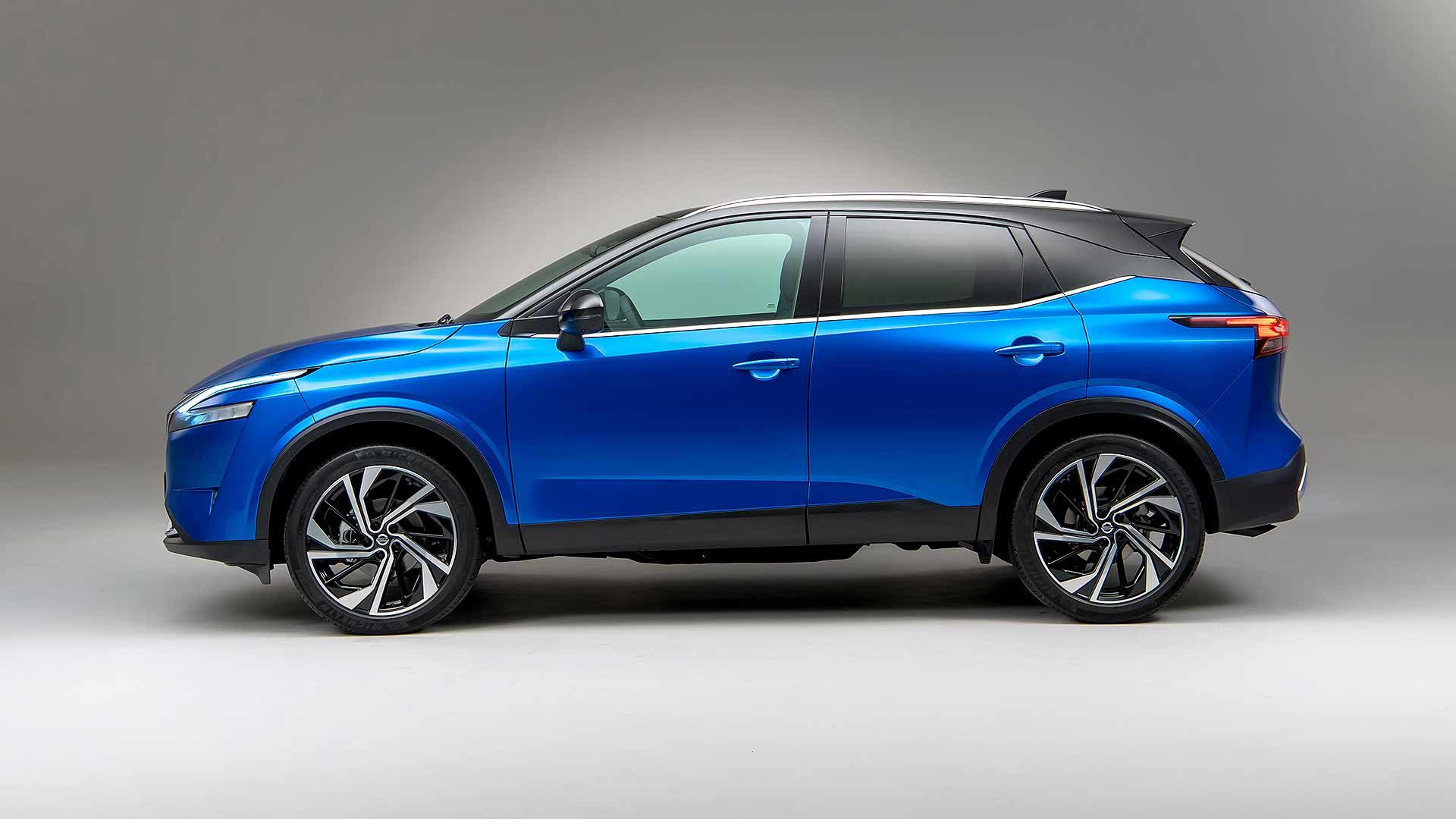
The Qashqai’s new design is based around taut lines and a more muscular appearance.
Surfaces have been simplified and bold, powerful volumes emphasised. With a longer wheelbase and wider body, Nissan says it appears more purposeful on the road.
But it hasn’t grown too much, adds the firm. It maintains a ‘just right’ size, measuring just over 4.4 metres long.
At the front, there’s a big ‘V-Motion’ chrome grille, inset with satin chrome. Slim LED headlights flank it, and improvements in manufacturing technology mean ultra-thin panel gaps for a premium appearance.
There’s a single ‘fast line’ at the side, giving a strong shoulder for the new Qashqai. It is pulled in towards the rear to emphasise the trademark chunky wheelarches.
In a notable weight-saving measure, the front and rear doors, front wings and bonnet are all made of aluminium, while the tailgate is made from composite materials.
The body is 60kg lighter and – in good news for ride, handling and refinement – 41 percent stiffer.
New Qashqai interior
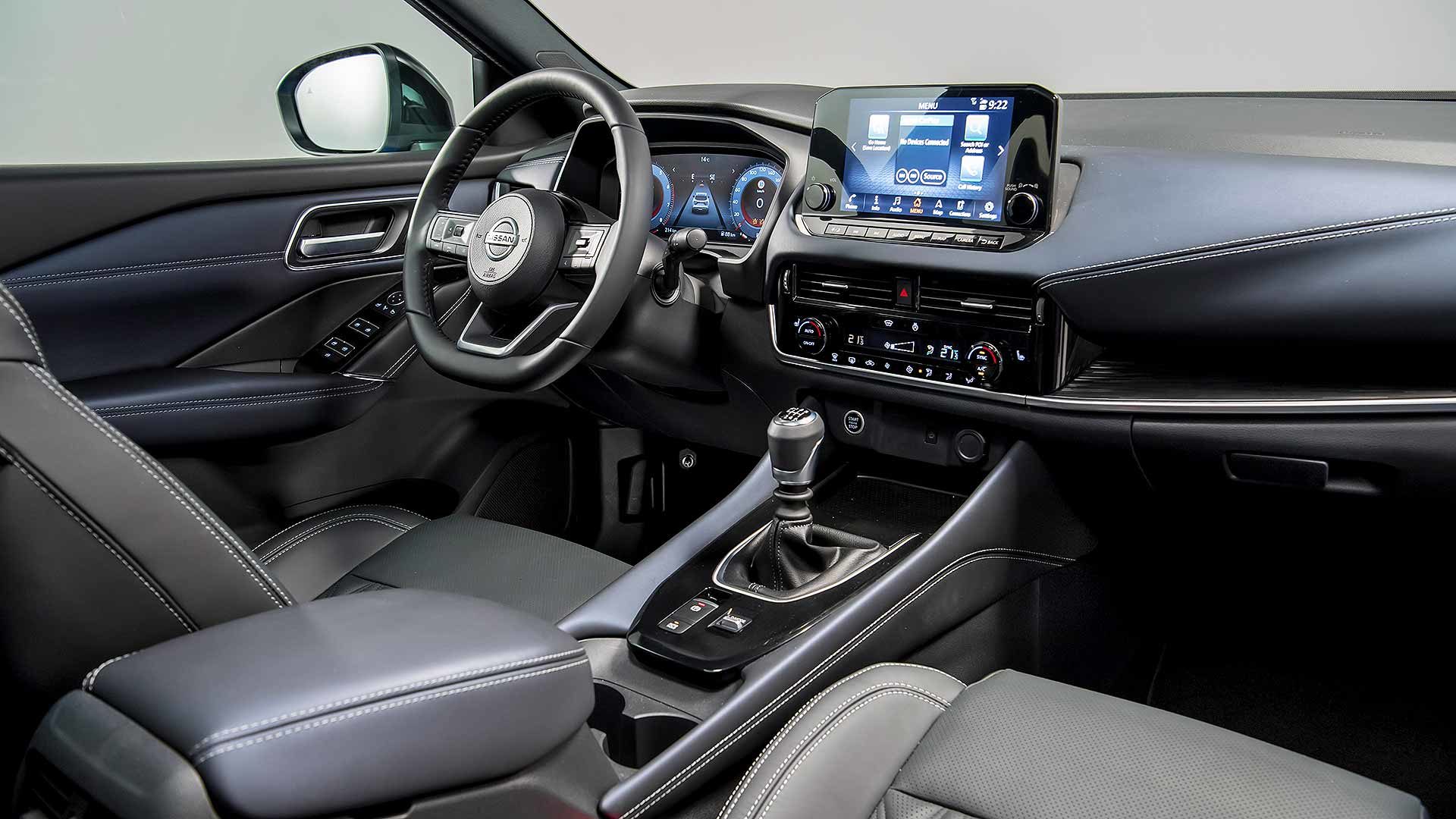
Nissan is promising a standard-setting interior with more premium materials and improved tech.
White ambient lighting is used throughout and ergonomics have been improved so it’s easier to operate. It is an “exceptional experience” said Mr Fioravanti, which “engenders a feeling of well-being”.
The central touchscreen has grown to 9.0 inches and the display is much higher resolution, plus there’s a new 12.3-inch HD TFT instrument cluster. This is multi-configurable and has a ‘Kiriko’ cut-glass texture background for an added luxury touch.
There’s also a 10.8-inch head-up display available, the biggest in the segment, which projects navigation, driver assistance and road information.
New Qashqai practicality
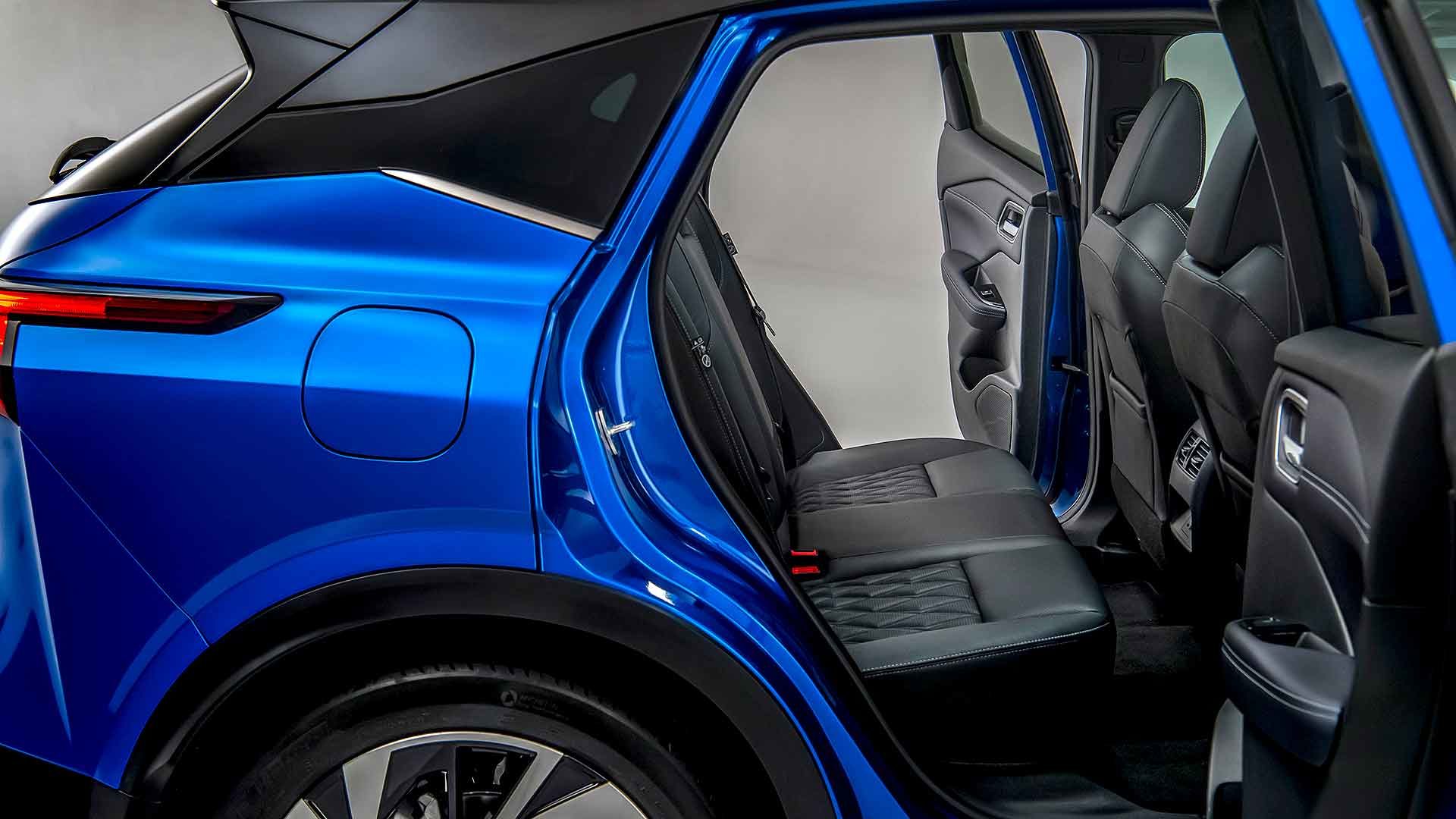
The new Qashqai has a wider windscreen, thinner front pillars and door mirrors actually mounted on the doors, rather than the pillars, which all gives a clearer view out. This, of course, is enhanced by the high-up crossover SUV stance.
There’s 28mm more knee room in the rear, and more overall distance between front and rear passengers. Headroom is improved by 15mm, too.
It’s easier to step in and out than before – useful for tight parking spaces, says Nissan – and the doors can now open up to 85 degrees, making it easier to install child seats.
The tailgate is now powered and hands-free, and boot space is improved by more than 50 litres. Nissan says this is thanks to new rear suspension, which has allowed it to lower the boot floor by 20mm, so it will also be easier to load.
The well-loved flexibility features of the old model have been kept, including the boot floor boards with carpet on one side and tough plastic on the other.
New Qashqai engines
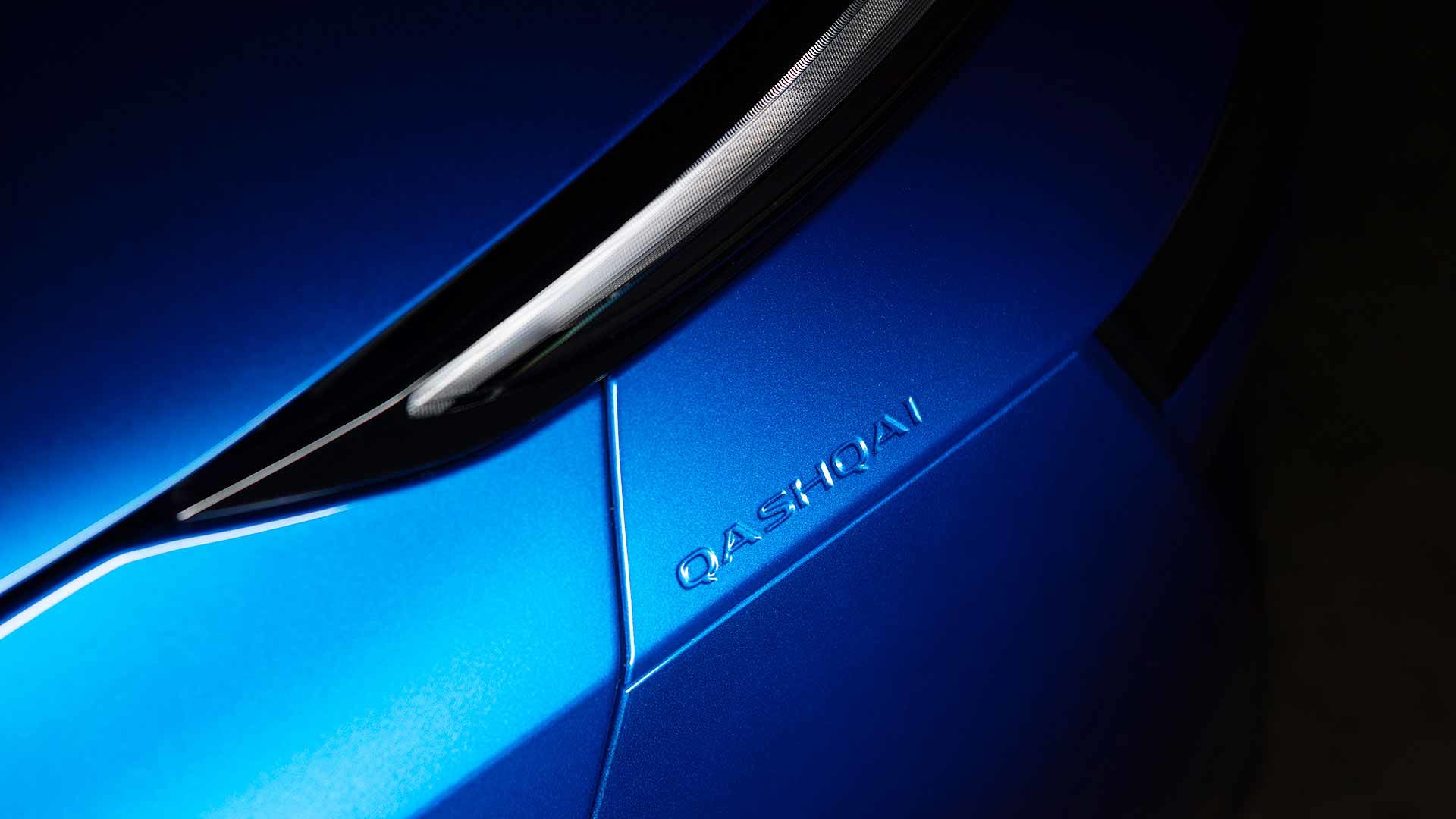
The engine range from launch will comprise solely the 1.3-litre DiG-T mild hybrid petrol, offered in 140hp and 158hp guises.
The 140hp engine has a six-speed manual gearbox and front-wheel drive, while the 158hp version has a choice of manual or Xtronic CVT automatic transmissions, plus front-wheel drive or four-wheel drive.
Speaking to Motoring Research, Mr Wright insisted the new CVT gearbox, with two oil pumps instead of one, will deliver a more pleasant experience and less of the ‘slipping clutch’ effect that motorists find unappealing.
“It’s a much more natural gearbox – it feels like a DCT [dual-clutch transmission] and gets away from simply sitting at high revs until the driver lifts off the accelerator,” he explained.
Standard 12v mild hybrid tech means the engine shuts down at speeds of 11mph and below, while power from the lithium-ion battery boosts acceleration between 12mph and 68mph. This takes load off the engine and improves fuel economy.
Nissan e-Power hybrid
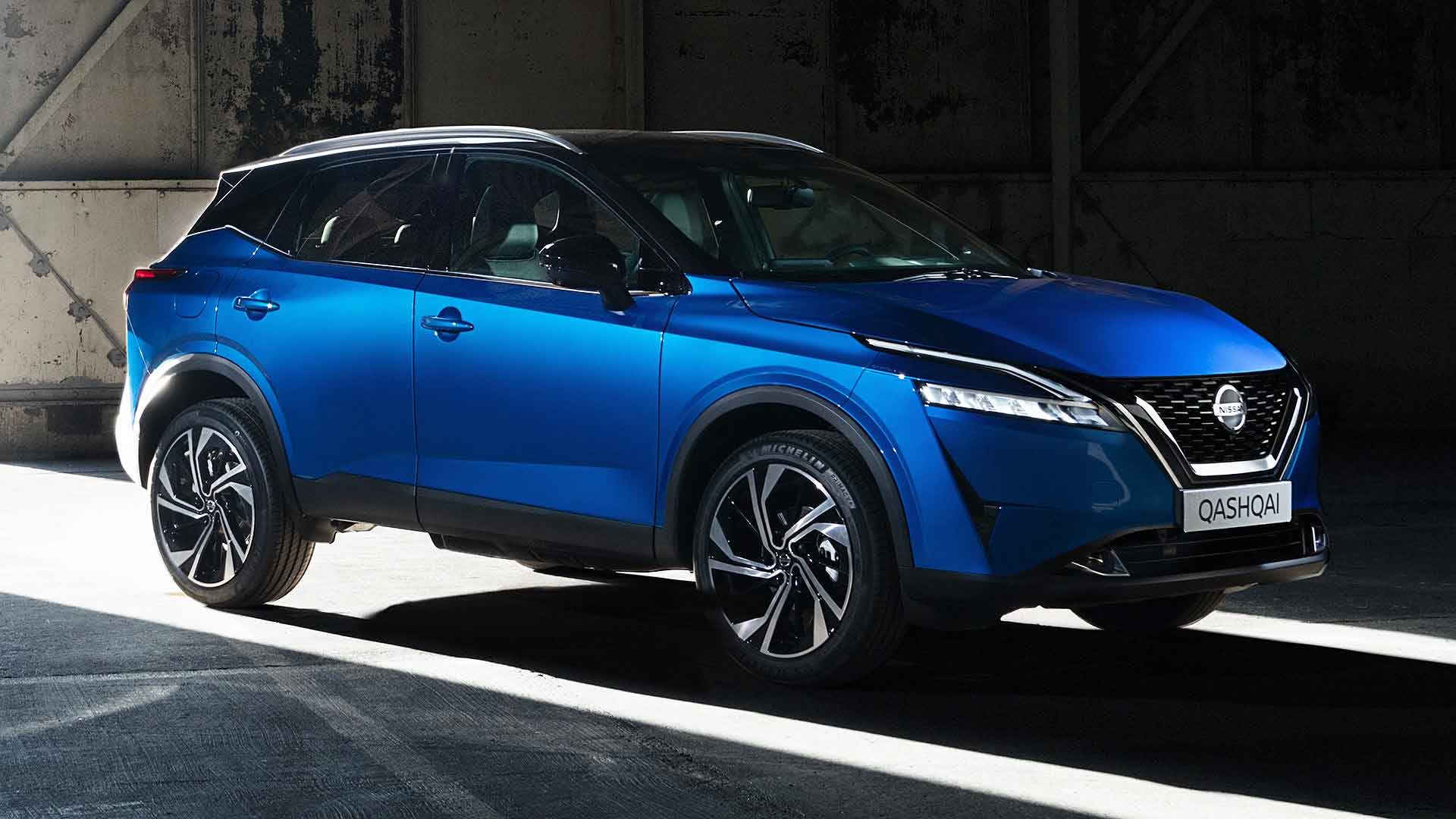
Nissan wants electrified cars, such as hybrids and plug-in hybrids, to comprise one in two of its sales by 2023, and the top-selling Qashqai will be key to that.
The e-Power engine option goes on sale in 2022 and is technology “never before seen in Europe”.
It comprises an ingenious 157hp 1.5-litre variable compression ratio petrol engine and a powerful 140kW (190hp) electric motor.
Nissan says the combination gives a driving experience similar to that of a pure electric car – because the petrol engine is only used to generate electricity and never directly drives the wheels.
It’s the electric motor that is connected to the wheels, meaning e-Power has an instant EV-like feel, with lots of pulling power and rapid acceleration.
As the engine has been decoupled, it can always run in its most fuel-efficient range – something aided by the variable compression ratio tech – which Nissan promises will deliver significant fuel economy improvements.
It can function for a mile or so as a pure EV, and also has a similar e-Pedal function to the Nissan Leaf electric car, allowing drivers to accelerate and decelerate using only the accelerator pedal.
Nissan says up to 90 percent of everyday driving can be done without actually pressing the brake pedal.
“We also have a button that switches it onto pure electric mode,” said Mr Fioravanti. “It’s called ‘Quiet Mode’: we don’t call it ‘EV Mode’ as e-Power is always in EV mode.”
ALSO READ:
Grey is UK’s favourite new car colour of 2020
Obviously Nissan never heard of the Vauxhall Ampera then…
Works in exactly the same way only it was 7 years ago, ahead of its time…
https://www.google.com/amp/s/www.autoexpress.co.uk/vauxhall/ampera%3famp
This is massive error by Nissan by not having a full EV option for the new Qashqai. This rules this out as a viable option for me. When others like Ford Mach E, VW ID4, Skoda Enyaq, Kia eNiro, Hyundai Kona this is could be a nail in the coffin for Nissan & Qashqai unfortunately. To go with same technology non plug in hybrid I think is a major error by senior management in Nissan and could be fatal in this decade which will be dominated by EV sales.